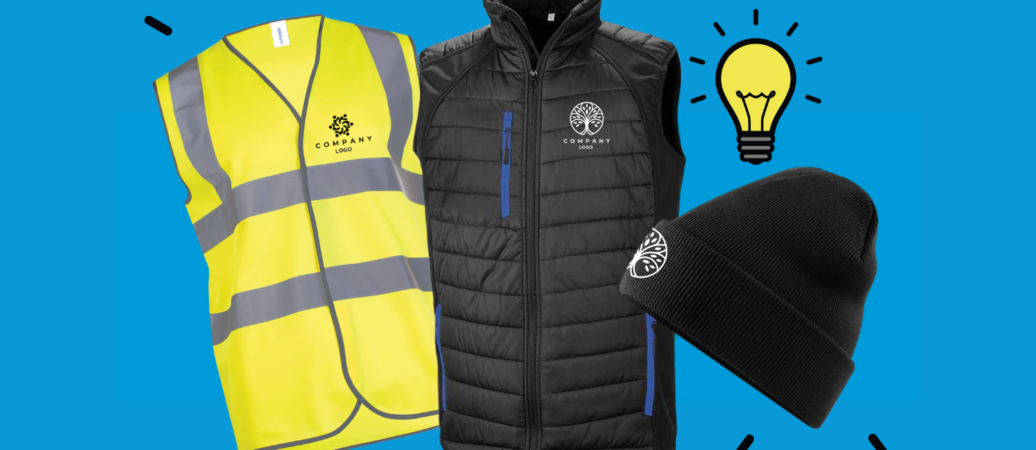How Branded Clothing Can Boost Confidence Through Fabric and Feel
Wiki Article
The Value of Lasting Clothing: Exactly How It Influences the Environment and Your Storage room
Lasting apparel is significantly identified for its important role in decreasing the ecological influence of the rapid style industry. By concentrating on environment-friendly materials and honest production techniques, it deals with pushing eco-friendly problems. This change not only benefits the earth yet likewise affects customer selections, leading to a much more thoughtful method to closet administration. Understanding these characteristics increases crucial inquiries about fashion's future and individual duty fit it.The Ecological Impact of Quick Fashion

Benefits of Lasting Materials
Lasting products offer substantial advantages, especially with environmentally friendly fabric options that reduce ecological damage. These materials additionally show durability and long life, reducing the requirement for frequent replacements. Because of this, they add to a more sustainable apparel industry and promote liable consumer habits.Eco-Friendly Fabric Choices
While the apparel industry has actually long been related to fast trends and environmental damage, the increase of green material selections presents a transformative possibility. Sustainable products such as natural cotton, hemp, and Tencel have obtained popularity as a result of their reduced eco-friendly impact. These materials are usually created without damaging pesticides and require much less water, lowering their carbon footprint - Branded Clothing. Furthermore, numerous green fabrics are naturally degradable, adding to a round economy by lessening waste. Choosing sustainable products not only supports ecologically accountable methods yet likewise promotes much healthier ecosystems. As customers end up being much more conscious of their buying power, the need for green textiles urges brand names to introduce and adopt even more lasting manufacturing techniques, ultimately benefiting the earth and future generations
Resilience and Durability Advantages
Many consumers are progressively identifying the toughness and durability benefits of lasting products in their garments options. Unlike standard fabrics, sustainable materials such as natural cotton, hemp, and recycled polyester are crafted to endure wear and tear, causing garments that last longer. This decreased frequency of replacement not only conserves customers money gradually but additionally decreases waste generated by quick fashion. Furthermore, sustainable clothing often utilizes environmentally friendly production approaches that improve material toughness, adding to a decrease in the overall carbon impact. By investing in long lasting clothes, customers can cultivate a much more sustainable wardrobe while enjoying top notch pieces that maintain their aesthetic and capability in time. Consequently, durability and long life stand as essential benefits of selecting sustainable materials.Decreasing Waste Via Sustainable Practices
Decreasing waste in the garment industry can be accomplished with innovative methods such as upcycling and repurposing materials. Additionally, taking on minimalist wardrobe strategies urges customers to prioritize high quality over quantity, eventually decreasing garments usage. Together, these methods contribute considerably to an extra lasting garments model.Upcycling and Repurposing Products
Upcycling and repurposing materials have actually arised as cutting-edge techniques in the fashion business, changing discarded fabrics right into important brand-new products. This approach not just minimizes waste yet additionally motivates creative thinking and originality in garments style. By taking old garments and products, designers can produce special items that reflect personal design while minimizing the need for new resources. Furthermore, upcycling typically needs less energy and water contrasted to standard production procedures, greatly reducing the ecological footprint of style. As consumers end up being much more familiar with sustainability, the appeal of upcycled clothes remains to rise, promoting a round economy. Inevitably, these practices contribute to a more lasting future, where style focuses on environmental health and wellness over quick production and intake.
Minimalist Wardrobe Strategies
As people significantly seek to decrease their ecological influence, taking on minimal wardrobe methods has gained grip as an efficient technique to sustainable fashion. These approaches stress high quality over quantity, encouraging customers to curate a smaller sized collection of versatile, long lasting clothes. By concentrating on classic items that can be blended and matched, individuals can lower the regularity of acquisitions and ultimately decrease waste.Additionally, minimalism advertises mindful consumption, advising shoppers to review the ethical and ecological ramifications of their selections. This approach not just cultivates a much more lasting way of life but also simplifies everyday decision-making pertaining to attire. As individuals accept minimalist principles, they contribute to a fashion society that values sustainability and liable consumerism, eventually causing a much more eco-conscious society.The Function of Ethical Labor in Sustainable Fashion
While numerous consumers are progressively aware of the environmental effects of their apparel selections, the relevance of honest labor methods in sustainable style can not be neglected. Honest labor incorporates fair earnings, secure working conditions, and respect for workers' civil liberties, creating the backbone of responsible fashion manufacturing. Brands that focus on moral labor not only boost neighborhoods but also established a criterion for accountability in the industry.Moreover, the combination of ethical methods fosters transparency, making it possible for customers to make informed choices concerning their purchases. This practice contrasts dramatically with rapid fashion's exploitative labor versions, which usually prioritize profit over people. By supporting business dedicated to honest labor, consumers contribute to a system that values human dignity alongside ecological sustainability. Consequently, ethical labor is not just an add-on; it is essential to the more comprehensive mission of lasting fashion, making certain that the pursuit for eco-friendliness does not come with the cost of human legal rights.The Influence of Sustainable Apparel on Carbon Emissions
Sustainable garments has the possible to substantially decrease carbon exhausts connected with the garment industry. Typical garment production adds significantly to greenhouse gas exhausts, mainly due to energy-intensive manufacturing my response processes and the usage of non-renewable sources. On the other hand, lasting fashion focuses on environment-friendly products, such as natural cotton or recycled fibers, which typically require much less energy to produce.Moreover, sustainable brands have a tendency to adopt much more effective production practices, minimizing waste and lowering general exhausts. By prioritizing resilience and ageless design, lasting garments urges consumers to get much less often, further minimizing the carbon impact related to overconsumption.Additionally, lots of lasting brand names are committed to transparency in their supply chains, allowing consumers to make educated options that straighten with their worths. Ultimately, shifting towards sustainable clothing can lead to a substantial reduction in carbon emissions, adding to a healthier world and a much more lasting future for the garment industry.Supporting Regional Economies With Sustainable Options
The shift towards sustainable apparel not just addresses environmental issues however additionally significantly advantages neighborhood economies. By picking lasting style, customers commonly sustain neighborhood craftsmens and little organizations, enhancing community durability. These enterprises usually operate on a smaller sized range, prioritizing workmanship and honest methods over mass production.Investing in locally made sustainable garments promotes work production and boosts financial growth within communities. As consumers end up being much more aware of the ecological impact of their purchases, they increasingly seek out products that reflect their worths. This need motivates neighborhood suppliers to take on lasting practices, adding to a round economy.Moreover, supporting regional companies decreases transportation exhausts, lining up with eco-conscious customer behavior. The interconnectedness of lasting clothing and local economic climates underscores the important role that private selections play in advertising both financial and environmental wellness. By promoting these local connections, communities can prosper while additionally functioning in the direction of a much more sustainable future.Transforming Your Closet: Tips for a Sustainable Closet
As people look for to reduce their ecological impact, transforming a storage room into a lasting wardrobe comes to be an essential step. One reliable technique is to assess existing garments, maintaining just products that are worn regularly and that align with sustainability goals. Prioritizing high quality over amount is important; investing in durable pieces from environmentally friendly brand names can greatly decrease waste.Additionally, including second-hand items can rejuvenate a closet while minimizing environmental damages. Organizing apparel swaps with close friends or contributing extra items can better advertise sustainability.When shopping, individuals need to look for materials that are natural, recycled, or eco-friendly, and stay clear of quick style merchants - Branded Clothing. Finally, exercising mindful go to this site usage by thoughtfully taking into consideration each acquisition can add to a more lasting way of life. By executing these pointers, one can develop a wardrobe that mirrors individual design while supporting environmental stewardshipOften Asked Questions
Exactly How Can I Identify Lasting Apparel Brands?
To recognize sustainable garments brands, one must research materials made use of, check for accreditations like Fair Trade, and check out the brand's transparency about their production processes, labor practices, and environmental influence, making sure eco-friendly and honest techniques are focused on.What Are the Prices Related To Lasting Style?
The prices related to lasting style can vary significantly. Higher manufacturing costs, honest sourcing, and green products often bring about raised market prices, which might prevent some customers while interesting environmentally conscious shoppers.Can Lasting Garments Be Fashionable and Stylish?
Sustainable clothing can undoubtedly be fashionable and elegant. Designers significantly prioritize ingenious materials and moral manufacturing methods, confirming that fashion and sustainability can exist together. Customers currently have diverse choices that mix aesthetic appeals with environmental consciousness.How Does Washing Clothes Affect Their Sustainability?
Washing clothes considerably impacts sustainability by consuming water and power, adding to air pollution, and causing microplastic release. Frequent cleaning can deteriorate fabrics, shortening their lifespan and boosting the need for replacements, ultimately aggravating ecological worries.What Is the Life-span of Lasting Garments Contrasted to Quick Style?
The life-span of lasting garments generally surpasses that of rapid style items, often long lasting numerous years because of quality products and craftsmanship. On the other hand, fast style garments may deteriorate swiftly, requiring more constant substitutes. Sustainable apparel is progressively recognized for its essential duty in minimizing the ecological influence of the fast style industry. While lots of consumers are significantly mindful of the ecological effects of their right here clothing selections, the relevance of honest labor practices in sustainable fashion can not be ignored. Branded Clothing. Sustainable clothing has the prospective to considerably minimize carbon emissions connected with the style industry. In comparison, lasting fashion focuses on green products, such as organic cotton or recycled fibers, which typically need much less energy to produce.Moreover, sustainable brand names tend to take on more reliable production methods, minimizing waste and reducing overall exhausts. By prioritizing sturdiness and classic layout, lasting apparel urges consumers to purchase much less frequently, further minimizing the carbon impact connected with overconsumption.Additionally, lots of lasting brand names are devoted to openness in their supply chains, making it possible for customers to make informed selections that line up with their worthsReport this wiki page